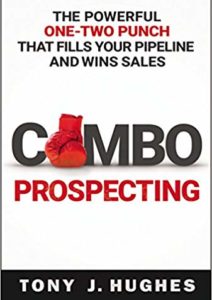I often ask senior executives what they think the biggest weakness is within their sales team. A common answer is that their salespeople need to get better at closing. But here is the thing I’ve learned from three decades in the trenches…
The perceived problem is rarely the real problem – inability to close is usually a symptom of deeper issues.
In both complex enterprise selling and simple or transactional selling (with one decision-maker) there is a universal truth that must be embraced if we are to improve results – the opening is far more important than closing.
The opening is the most important phase of the sale because the way we initiate the relationship determines the likelihood of success. The two critical issues in the opening are 1) selecting the correct role to engage within the customer organization, and 2) creating a conversation that provides value (through insights) for them.
1) Opening the corporate relationship with the right person
A common mistake in selling is to engage with the people who most easily agree to take a call or meet face-to-face. Inbound leads often come from recommenders and information gatherers who act for others. These people are keen to obtain information but can quickly become blockers who seek to deny us access to the real decision-making power-base. We must carefully select the right entry point into every opportunity and by definition, this decision-driver will often be difficult to reach.
If you are already engaged at the wrong level and struggling to elevate your conversations in an account, these questions that can earn the right to go higher.
- “What is the business outcome this initiative has to deliver at a business case level?”
- “What are the biggest risks in this project and what is your strategy to manage those risks?”
These questions also set the right agenda when engaging a real decision-maker because leaders care about delivering results and managing risk. The business case and change management issues always figure high in their thinking. But how do you open a conversation when you are proactively reaching out to a senior customer executive?
2) Setting the right agenda on value through insight
No senior leader worth engaging is interested in us, our company or our products, services and ‘solutions’. They instead care about their own results, stakeholders and career. Although we are wired to talk about ourselves, what we do and how we do it; we must instead lead with why a conversation should matter to the other person.
We can create conversations of insight and value by truly understanding our best customers and the disruptive market trends that are relevant to our new potential clients. Selling strategically also means engaging early and the most senior level possible, setting an agenda that creates a positive bias toward us while engineering the requirements and their process in a way that makes it difficult for the competition.
The best sellers are sponsored down into the buyer’s organization by the leader to then develop inside knowledge and support where closing becomes a natural next step of partnership rather than a white-knuckle adventure filled with misplaced hope and reliance on luck.
Here is a 2-minute interview I did with John Smibert on closing.
The 3 prerequisites for closing
Asking for the customer’s business must be earned and only attempted after the buyer has signaled they are ready to take that next step. The seller should never attempt to close until these three areas are covered, or to use a baseball metaphor, don’t run for home plate until these three bases have been covered:
- Establish trust and rapport (by being authentic and transparent).
- Agree on a compelling business value (as defined by them).
- Understand their timing and priorities (and their process for evaluation, selection, and procurement if in complex enterprise environments).
Many salespeople make the mistake of pressuring their potential client when the buyer isn’t in a position to commit to the purchase. Managers often push their salespeople to offer discounts on one hand and threats of a price increase on the other if the buyer fails the meet the seller’s deadline. I’ve seen sales managers instruct salespeople to go and sit in the customer’s lobby for days until the purchase order is secured… desperation is the worst way to attempt a close.
The bottom line in closing
Difficulty in closing is almost always a symptom of not managing the sale properly. Closing must be earned and objections are usually evidence of the fact that the seller has made mistakes by pushing before trust and value has been established and without the necessary understanding of the customer’s timing, priorities, and processes.
All managers need to know that they cannot ‘manage by results’ and must instead focus on driving activities and actions while coaching strategy and skills. Ask the right questions of your salespeople right at the beginning of the quarter and help them identify and execute the right actions that create the progression of the sale. Firing-up the blow-torch with just days to go for hitting sales targets, after neglecting the inputs that create success, is a sure-fire way to damage relationships, undermine the credibility and drive-down price and margin.
A special note of thanks to Jonathan Farrington for allowing me to base this blog post on a magazine article I wrote for Top Sales Magazine, published in March 2016. FREE subscription to Top Sales here.













Comments